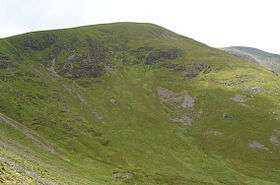Please tell us which country and city you'd like to see the weather in.

Lake District
The Lake District, also known as The Lakes or Lakeland, is a mountainous region in North West England. A popular holiday destination, it is famous for its lakes, forests and mountains (or fells) and its associations with the early 19th century writings of William Wordsworth and the other Lake Poets.
Historically split between Cumberland, Westmorland and Lancashire, the Lake District is now entirely in Cumbria. All the land in England higher than 3,000 ft (910 m) above sea level lies within the National Park, including Scafell Pike, the highest mountain in England. It also contains the deepest and longest lakes in England, Wastwater and Windermere.
Lake District National Park
The Lake District National Park includes nearly all of the Lake District, though the town of Kendal and the Lakeland Peninsulas are currently outside the park boundary.
The area, which was designated a national park on 9 May 1951 (less than a month after the first UK national park designation — the Peak District), is the most visited national park in the United Kingdom with 15.8 million annual visitors and more than 23 million annual day visits, the largest of the thirteen national parks in England and Wales, and the second largest in the UK after the Cairngorms. Its aim is to protect the landscape by restricting unwelcome change by industry or commerce. Most of the land in the park is in private ownership, with about 55% registered as agricultural land. Landowners include:
Lake District (disambiguation)
Lake District may refer to one of the following:
- Lake District, a rural area in North West England.
- Lake District National Park, protected area of the Lake District.
- County Fermanagh, north-west county in Ireland, referred to as the Irish Lake District.
- The Nechako Lakes District in Central British Columbia, Canada
- Lake District, Edmonton, residential district in Alberta, Canada
- Lakes District Secondary School, in British Columbia, Canada
- Chilean Lake District, a zone in Southern Chile defined by its many lakes
- Los Lagos Region (Region of the Lakes) in Chile

Turkish Lakes Region
The Turkish Lake District or Turkish Lakeland is an area with a series of shallow tectonic lakes within the folds of the Taurus Mountains in Southwestern Anatolia, Turkey
The major lakes are Lake Acı, Lake Akşehir, Lake Beyşehir, Lake Burdur, Lake Eğirdir, and the smaller ones are Lake Çavuşçu and Lake Salda.
References

Sail (Lake District)
Sail is a hill in the English Lake District, lying between Derwentwater and Crummock Water.
Topography
The North Western Fells occupy the area between the rivers Derwent and Cocker, a broadly oval swathe of hilly country, elongated on a north-south axis. Two roads cross from east to west, dividing the fells into three convenient groups. The central sector, rising between Whinlatter Pass and Newlands Pass, includes Sail. The highest ground in the North Western Fells is an east-west ridge in this central sector, beginning with Grasmoor above Crummock Water and then gradually descending eastwards over Crag Hill, Sail, Scar Crags and Causey Pike.
Sail is in every sense a satellite of Crag Fell, although having sufficient prominence to be listed as a Hewitt. From the summit of Crag Hill the eastward ridge narrows between opposing walls of crag. This rocky crest is The Scar, the depression being at around 2,425 ft. The roughness decreases as the rounded top of Sail is reached, and the ridge then turns east north east. A further depression at 2,015 ft leads to the summit of Scar Crags. This col is unnamed on maps of the Ordnance Survey, but Alfred Wainwright termed it Sail Pass in his influential Pictorial Guide to the Lakeland Fells
Radio Stations - Lake District
SEARCH FOR RADIOS
Podcasts:

Latest News for: sail (lake district)
Roger Altounyan: the link from a hay fever remedy to Arthur Ransome
Roger Altounyan: the link from a hay fever remedy to Arthur Ransome | Letter
- 1
